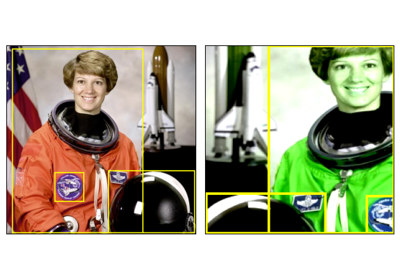RandomPhotometricDistort
- class torchvision.transforms.v2.RandomPhotometricDistort(brightness: Tuple[float, float] = (0.875, 1.125), contrast: Tuple[float, float] = (0.5, 1.5), saturation: Tuple[float, float] = (0.5, 1.5), hue: Tuple[float, float] = (- 0.05, 0.05), p: float = 0.5)[source]
[BETA] Randomly distorts the image or video as used in SSD: Single Shot MultiBox Detector.
Note
The RandomPhotometricDistort transform is in Beta stage, and while we do not expect disruptive breaking changes, some APIs may slightly change according to user feedback. Please submit any feedback you may have in this issue: https://github.com/pytorch/vision/issues/6753.
This transform relies on
ColorJitterunder the hood to adjust the contrast, saturation, hue, brightness, and also randomly permutes channels.- Parameters:
brightness (tuple of python:float (min, max), optional) – How much to jitter brightness. brightness_factor is chosen uniformly from [min, max]. Should be non negative numbers.
float (contrast tuple of) – How much to jitter contrast. contrast_factor is chosen uniformly from [min, max]. Should be non-negative numbers.
saturation (tuple of python:float (min, max), optional) – How much to jitter saturation. saturation_factor is chosen uniformly from [min, max]. Should be non negative numbers.
hue (tuple of python:float (min, max), optional) – How much to jitter hue. hue_factor is chosen uniformly from [min, max]. Should have -0.5 <= min <= max <= 0.5. To jitter hue, the pixel values of the input image has to be non-negative for conversion to HSV space; thus it does not work if you normalize your image to an interval with negative values, or use an interpolation that generates negative values before using this function.
p (float, optional) probability each distortion operation (contrast, saturation, ...) – Default is 0.5.
Examples using
RandomPhotometricDistort:
Transforms v2: End-to-end object detection/segmentation example
Transforms v2: End-to-end object detection/segmentation example

